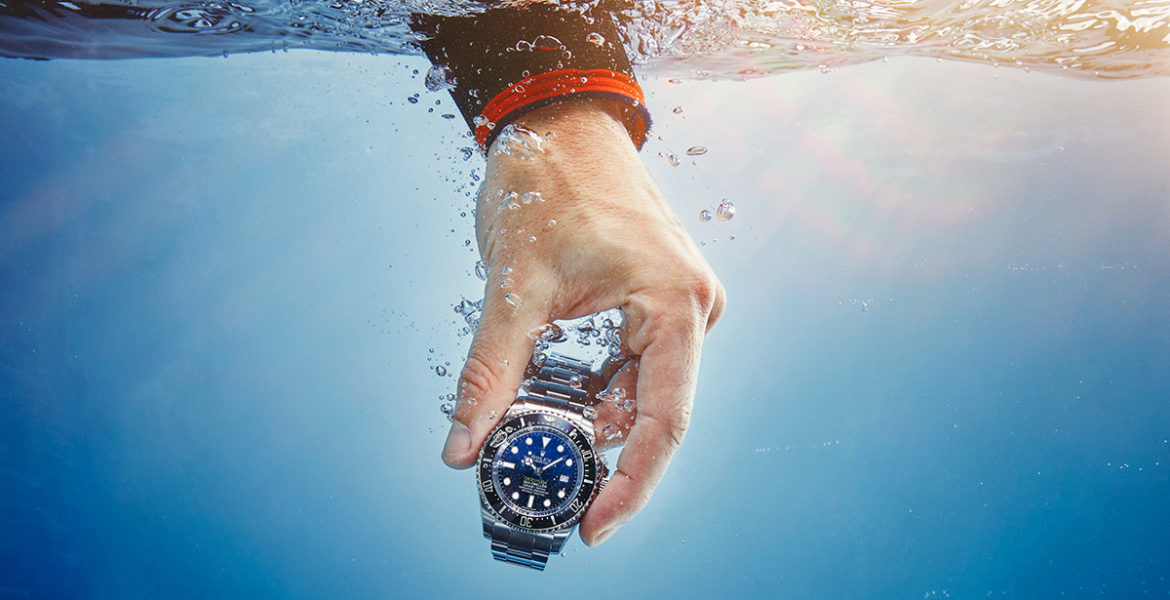
In the world of wristwatches, one of the most commonly misunderstood features is water resistance. You’ll see watches marked with designations like “30m water-resistant” or “100m WR,” but these numbers can be misleading if taken at face value. Understanding what water resistance truly means – and what it doesn’t – can help you make smarter choices about how and when to wear your watch.
What Does “Water Resistant” Actually Mean?
When a watch is labeled as water resistant, it means the watch has been designed to withstand contact with water to a certain degree. However, it’s important to understand that water resistance ratings are not always literal, and they don’t guarantee a watch will survive under those conditions indefinitely or repeatedly.
Water resistance ratings are usually tested in a laboratory under static pressure. In real life, movement increases pressure – so diving into a pool with a “50m water resistant” watch can subject it to far greater pressure than it was designed to handle.
Common Water Resistance Ratings Explained
Let’s decode the most common water resistance ratings and what activities they’re actually suitable for:
| Rating | What it Means in Real Life |
|---|---|
| 30 meters (3 ATM / 3 BAR) | Splash resistant. Good for handwashing or getting caught in rain, but not suitable for swimming or submersion. |
| 50 meters (5 ATM / 5 BAR) | Can handle light swimming, but still not ideal for extended water exposure. |
| 100 meters (10 ATM / 10 BAR) | Suitable for swimming, snorkeling, and recreational water sports. |
| 200 meters (20 ATM / 20 BAR) | Good for high-impact water sports and professional marine activity. Can be used for diving. |
| Diver’s 200m+ (ISO 6425 Certified) | Professional-grade dive watch. Suitable for deep diving, includes features like helium escape valves, screw-down crowns, and more. |
The Myth of the “Meter”
Perhaps the most misleading part of a water resistance label is the “meters” part. Many people assume a 30m water-resistant watch is safe to dive down to 30 meters, but that’s not the case.
Here’s why:
- The test is done in a static, controlled environment.
- It does not account for water movement, temperature changes, or repeated stress.
- Over time, gaskets and seals degrade, reducing water resistance.
So, 30 meters ≠ diving 30 meters.
Key Factors That Influence Water Resistance
1. Gaskets & Seals
These rubber or synthetic rings create watertight barriers. They are critical but degrade with time due to age, heat, or saltwater exposure.
2. Screw-Down Crown
A screw-down crown improves water resistance by sealing off one of the most vulnerable parts of the watch. Always ensure it’s screwed in before water exposure.
3. Case Back Design
A screw-down case back (as opposed to snap-on) provides a tighter seal against water intrusion.
4. Material & Construction
High-quality stainless steel or titanium cases offer better corrosion resistance and sealing integrity.
Water Resistance Maintenance Tips
Water resistance isn’t permanent. Here’s how to keep your watch safe:
- Have your watch pressure-tested annually, especially if you use it for swimming or diving.
- Never operate the crown or pushers under water, unless it’s specifically designed for it.
- Rinse with fresh water after exposure to salt or chlorine, which can degrade seals.
- Avoid hot showers or saunas – extreme heat and steam can affect water resistance and damage the seals.
- Replace gaskets and seals as part of routine servicing.
ISO Certification: The Gold Standard for Dive Watches
If you’re serious about diving, look for watches certified under ISO 6425, which ensures:
- Water resistance to at least 100m.
- Visibility in total darkness.
- Resistance to shock, magnetic fields, and thermal shock.
- A unidirectional bezel for tracking dive time.
Brands like Seiko, Citizen, Rolex, and Omega all offer ISO-certified dive watches.
When in Doubt, Don’t Get It Wet
If your watch doesn’t specifically state it’s designed for swimming or diving, it’s best to play it safe. A mistake here could lead to:
- Fogging or condensation under the crystal.
- Movement damage due to water ingress.
- Corrosion or rust on internal components.
Even with a high water resistance rating, time and wear can compromise seals – making a once-diving-capable watch vulnerable.
Conclusion
Water resistance is a fantastic feature that adds practicality and durability to your wristwatch. But it’s not a “set it and forget it” deal. Understanding the rating, maintaining your watch properly, and respecting its limitations can save you from costly damage. Whether you’re caught in the rain or diving in the ocean, knowing what your watch can (and can’t) handle is essential to keeping it ticking for years to come.





